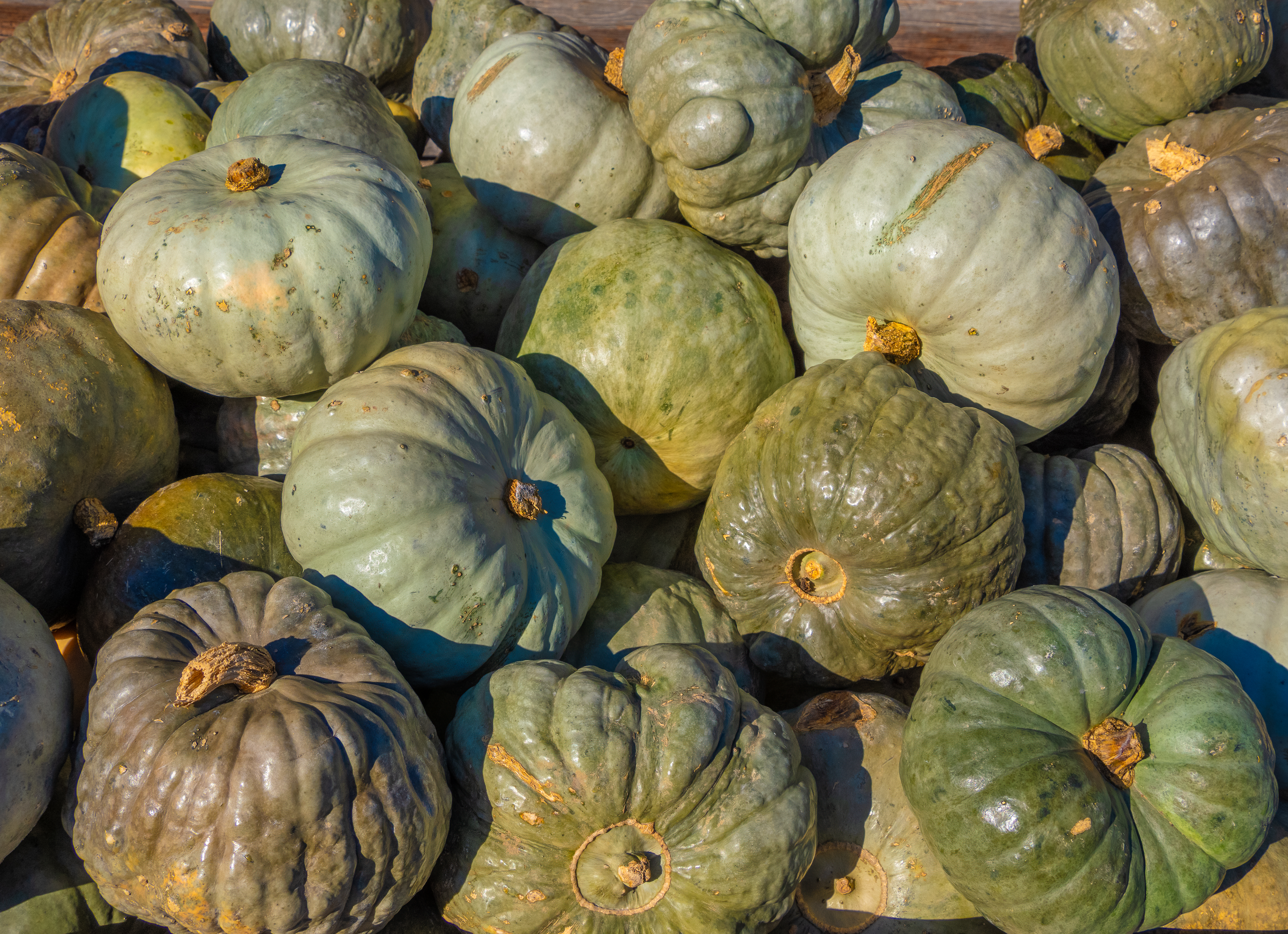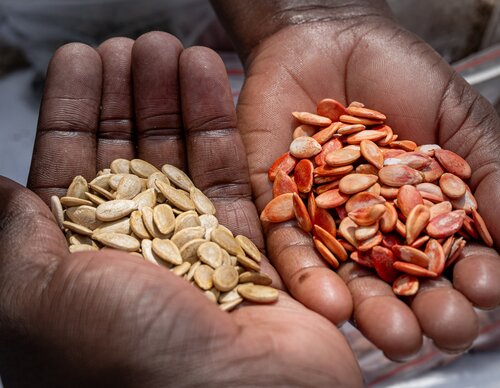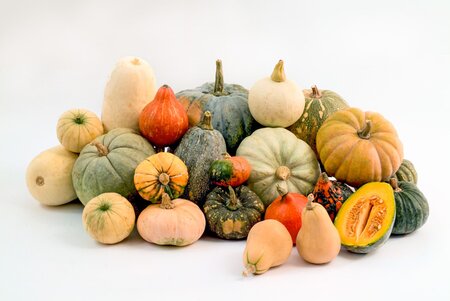Pumpkin
Cucurbita pepo
Crop Overview
Pumpkin is a versatile crop with significant culinary, nutritional and agronomic benefits. It is native to northeastern Mexico and the southern United States and was domesticated over 7,000 years ago. Today, pumpkins are grown on all continents, from as far north as Norway to as far south as New Zealand. Major producers include the United States, India, China and Mexico.
Cucurbita pepo L. has a wide diversity of fruit characteristics, with fruits ranging in size from less than 100 g to over 20 kg and in shape from round to extremely long to flat, with or without ribs, grooves, furrows, wrinkles or warts. Fruits can be green, yellow or orange, with shades ranging from almost black to almost white. The common names include pumpkin, squash and gourd, which may also apply to several other related species, not just C. pepo.
Characteristics, Cultivation and Agricultural Practices
Pumpkins thrive in warm climates, requiring full sun and well-drained, fertile soil. They prefer temperatures between 18°C and 24°C for optimal growth. They tolerate drought and soil and water salinity, although consistent moisture is essential during the fruit-setting phase. However, they are susceptible to waterlogging. Pumpkins are vulnerable to a number of viral diseases, including squash mosaic virus and zucchini yellow mosaic virus, as well as powdery mildew and aphids. Effective mitigating practices include crop rotation, integrated pest management and the use of resistant varieties.
Under optimal conditions, pumpkins can yield up to 30 tonnes of fruits per hectare. Pumpkins may be grown as a monocrop or intercropped with other crops, such as maize or beans.
Pumpkins have a long shelf life and can stay good for consumption for several months without needing a cold chain or sophisticated storage facilities. Their tough skin makes them relatively easy to transport.
Nutritional, Economic and Medicinal Value
Mature and immature fruits, flowers and young leaves are commonly used as vegetables. The seeds are edible and rich in zinc. Mature fruits are used as animal feed. Pumpkin pulp is an excellent source of beta-carotene, which the human body converts to vitamin A, and contains some vitamin C. The seeds are also nutrient-dense, offering healthy fats, protein and minerals.
Pumpkin fruits are commonly used in curries, soups, pies and other dishes. The pulp can also be frozen, dried and canned. The flesh and seeds can be processed into flour.
Pumpkin oil is used in salad dressings and in cosmetics.
In Central America and India, the oil is applied on herpes lesions, venereal sores, acne and chronic leg ulcers. Pumpkin sap and pulp have been traditionally used in Central and North America to treat burns and seeds are used as a diuretic. Pumpkin seeds have also been widely used as a deworming treatment.
Cultural Importance
Pumpkins are deeply embedded in various cultural practices, especially in North America. Indigenous American tribes planted maize, climbing beans and pumpkins together, with the belief that these 'Three Sisters' grew best with this kind of planting. Today, pumpkins are associated with harvest festivals, Halloween and Thanksgiving.
Gender Perspectives
Where pumpkin is grown as a subsistence crop, women are typically responsible for seed selection, planting and crop maintenance.
Why is the Crop Underutilized?
Factors contributing to the underutilization of pumpkin include a lack of awareness about its health benefits, limited markets and competition from other crops perceived as more profitable. Additionally, traditional cultivation methods may hinder the adoption of modern agricultural practices that could enhance productivity.
Current research efforts are aimed at promoting pumpkin cultivation through improved marketing strategies, awareness campaigns and the development of value-added products. Addressing the challenges of market access and consumer knowledge could boost the cultivation and consumption of pumpkins globally.
Diversity Available in Genesys
As of December 2024, Genesys, the online information platform about plant genetic resources for food and agriculture conserved in genebanks worldwide, lists just over 6,300 samples of C. pepo, roughly half of which are landraces, and nearly 1,500 are advanced or improved cultivars. The largest collections are held by:
- The USDA-ARS North Central Regional Plant Introduction Station in the United States – 979 samples.
- The Centre for Plant Diversity in Hungary – 649 samples.
- The genebank of the Leibniz Institute of Plant Genetics and Crop Plant Research in Germany – 542 samples.
Current Breeding Efforts
Programs in the USA include those at North Carolina State University and the University of New Hampshire. Selcuk University in Türkiye has a breeding program focused on increasing drought tolerance. The Gleisdorf Seed Breeding Institute in Austria focuses on oil pumpkin, developing new, virus-tolerant lines for oil production.




